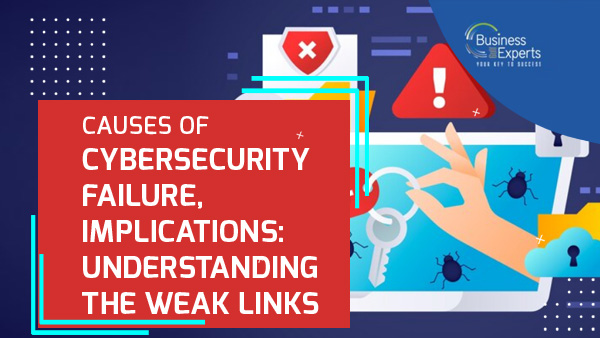Office365 Security Failure: Millions Stolen From Executive Accounts

Table of Contents
Phishing and Social Engineering Attacks: The Primary Threat Vector
Understanding the Tactics
Sophisticated phishing emails and social engineering techniques are the primary vectors for compromising Office365 accounts. Attackers employ increasingly deceptive methods to bypass security measures.
- Impersonation: Phishing emails often impersonate executives, trusted colleagues, or even IT support, creating a sense of urgency and legitimacy.
- Urgent Language: Emails use alarming language, threatening immediate account suspension or demanding urgent action to pressure recipients into clicking malicious links or opening attachments.
- Enticing Rewards: Some phishing attempts offer enticing rewards, such as gift cards or large sums of money, to lure unsuspecting victims.
- Malicious Links and Attachments: These often lead to websites designed to steal credentials or download malware onto the victim's computer, providing the attacker with access to the Office365 account.
- Psychological Manipulation: Attackers exploit human psychology, preying on trust, fear, and curiosity to increase the likelihood of a successful attack.
Why Executives are Prime Targets
Executives are prime targets due to their access to sensitive financial information and high-level approval authority. Compromising an executive account grants attackers significant control over an organization's finances.
- Financial Fraud: Compromised executive accounts can be used to authorize fraudulent wire transfers, initiate fake invoices, and manipulate financial records.
- High-Level Approvals: Attackers can use compromised accounts to approve large payments or make significant changes to company policies without detection.
- Increased Trust: Executives often receive a higher level of trust, making them more susceptible to sophisticated phishing attacks. Their authority makes their accounts particularly valuable to malicious actors.
Weak Passwords and Password Reuse: A Critical Vulnerability
The Dangers of Weak Passwords
Using easily guessable passwords or reusing the same password across multiple platforms significantly increases the risk of an Office365 security breach.
- Password Breaches: Statistics show a high percentage of data breaches are caused by weak or reused passwords. Millions of credentials are regularly exposed in data breaches, making it easier for attackers to gain access to various accounts using the same credentials.
- Weak Password Examples: Simple passwords, easily guessable personal information, and passwords based on dictionary words are vulnerable to brute-force and dictionary attacks.
- Importance of Strong, Unique Passwords: Employing strong, unique passwords for each online account is essential for robust security. Use password managers to help generate and securely store complex passwords.
Multi-Factor Authentication (MFA) – A Critical Defense
Multi-Factor Authentication (MFA) adds an extra layer of security, significantly reducing the risk of unauthorized access even if credentials are stolen.
- Types of MFA: Common MFA methods include One-Time Passwords (OTP) via authenticator apps, SMS codes, and biometric authentication (fingerprint, facial recognition).
- How MFA Works: MFA requires users to provide multiple forms of verification, such as a password and a code from an authenticator app. Even if the password is compromised, the attacker still needs access to the second factor.
- Effectiveness Against Phishing: MFA significantly increases the security posture against phishing attacks because even if the user clicks a malicious link and enters their password, the attacker still lacks the second factor to gain access to the account.
Lack of Employee Security Awareness Training: The Human Element
The Human Element: A Major Weakness
Employees are often the weakest link in an organization's security chain. Lack of training makes them vulnerable to phishing attacks and other social engineering techniques.
- Effective Security Awareness Training: Regular security awareness training programs should educate employees about phishing techniques, safe browsing practices, and the importance of reporting suspicious emails.
- Phishing Simulations: Regular simulated phishing attacks help assess employees' vulnerability and reinforce training effectiveness. These simulations provide valuable insights into the effectiveness of the training and highlight areas needing further improvement.
- Consequences of Human Error: Human error is a leading cause of security breaches. Thorough training minimizes these risks.
Investing in Security Awareness: A Proactive Approach
Investing in ongoing security awareness training and education for all employees significantly reduces the risk of security breaches and strengthens the overall security posture.
- Reduced Risk of Phishing Attacks: Effective training empowers employees to identify and avoid phishing attempts, significantly reducing the likelihood of successful attacks.
- Improved Overall Security Posture: A well-trained workforce is more vigilant and less susceptible to social engineering techniques, creating a stronger overall security environment.
- Cost Savings: The cost of security awareness training is far less than the cost of recovering from a data breach. This is a critical return on investment for businesses of all sizes.
Insufficient Monitoring and Detection Capabilities: Blind Spots in Security
The Need for Real-Time Monitoring
Real-time monitoring and alert systems are crucial for detecting suspicious activities within the Office365 environment. Early detection minimizes damage and enables rapid response.
- Security Information and Event Management (SIEM) Systems: SIEM systems aggregate logs from various sources, enabling real-time analysis of security events and the detection of anomalies.
- Timely Threat Response: Early detection through monitoring allows for swift action, reducing the impact of a potential security breach and minimizing the damage.
The Role of Security Audits: Identifying and Mitigating Risks
Regular security audits help identify vulnerabilities and ensure compliance with security best practices. Both internal and external audits offer different perspectives and benefit organizations.
- Internal Security Audits: Internal audits assess the effectiveness of existing security measures and identify areas for improvement within the organization.
- External Security Audits: External audits provide an independent assessment of the organization's security posture and offer unbiased recommendations for enhanced protection.
- Continuous Improvement: Regular audits promote a culture of continuous improvement in security measures, keeping the organization ahead of evolving threats.
Conclusion
The Office365 security failures leading to millions stolen from executive accounts serve as a stark warning to businesses of all sizes. Protecting your organization from these sophisticated attacks requires a multi-layered approach encompassing strong passwords, multi-factor authentication, comprehensive employee training, and robust monitoring systems. Neglecting these crucial security measures can result in devastating financial and reputational consequences. Invest in comprehensive Office365 security solutions today to safeguard your organization and prevent becoming the next victim of a costly security breach. Don't wait for an Office365 security failure to impact your bottom line – act now to secure your future. Enhance your Office365 security today and protect your business from costly breaches.

Featured Posts
-
 Coronation Street Joint Thank You Message From Charlotte Jordan And Lucy Fallon Brings Co Star To Tears
May 01, 2025
Coronation Street Joint Thank You Message From Charlotte Jordan And Lucy Fallon Brings Co Star To Tears
May 01, 2025 -
 Is Xrps 400 3 Month Rally A Buying Opportunity
May 01, 2025
Is Xrps 400 3 Month Rally A Buying Opportunity
May 01, 2025 -
 The Silent Killer Doctor Says This Food Is Worse Than Smoking
May 01, 2025
The Silent Killer Doctor Says This Food Is Worse Than Smoking
May 01, 2025 -
 Understanding The Delays In Kentuckys Storm Damage Assessments
May 01, 2025
Understanding The Delays In Kentuckys Storm Damage Assessments
May 01, 2025 -
 Becciu E Il Complotto Le Chat Di Domani Svelano Dettagli Cruciali
May 01, 2025
Becciu E Il Complotto Le Chat Di Domani Svelano Dettagli Cruciali
May 01, 2025
